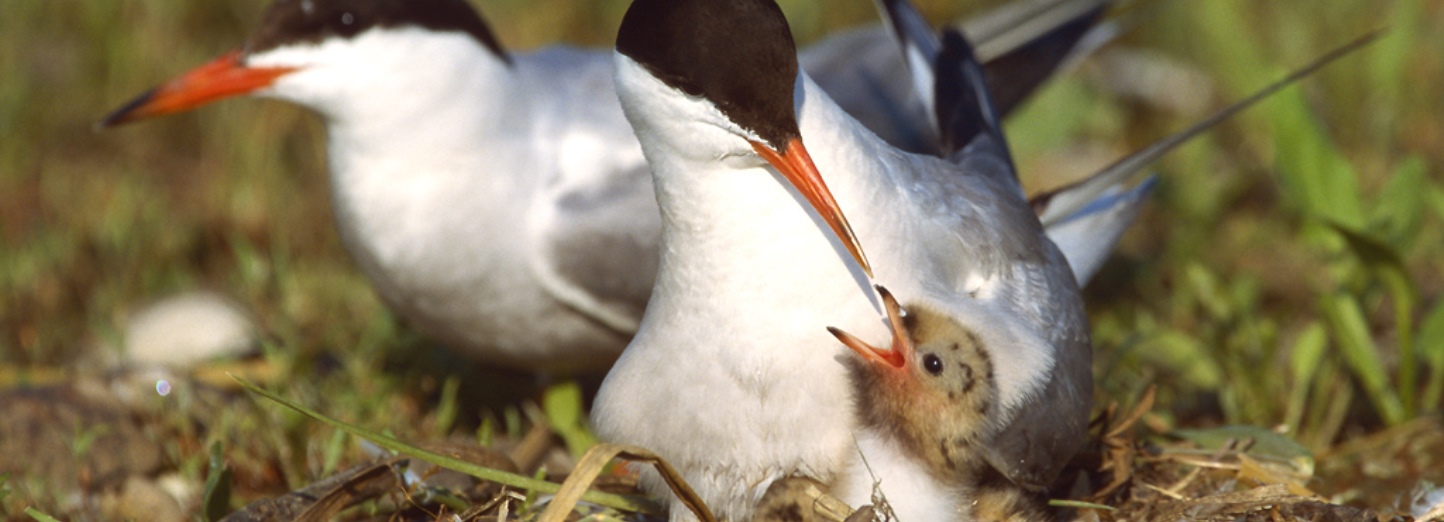
Better the devil you know
Common terns stay with the same partner for life even though they have poor breeding success
Many bird species are monogamous. Especially long-lived species where both parents take part in caring for the chicks form lifelong partnerships. According to life-history theories there should be reproductive advantages of remaining with the same partner.
- Life-history theories predict that the choice of mating partner should improve an individual’s chances to reproduce successfully, says Fernando Colchero, Associate Professor, Department of Mathematics and Computer Science and Max Planck Odense Center on the Biodemography of Aging.
Together with colleagues Maren Rebke from Avitec Research and the Max Planck Institute for Demographic Research in Rostock, Germany and Peter H. Becker from the Institute of Avian Research “Vogelwarte Helgoland” in Wilhelmshaven, Germany, they have developed a statistical model to analyze the long-term study on common terns in the Banter See in Wilhelmshaven led by Professor Becker.
The terns meet every year
The model allowed them to reconstruct the steps these birds follows every year from surviving, deciding to breed, choosing a partner and producing chicks. The results are published in the journal Proceedings of the Royal Society B.
Terns meet every year on six artificial islands off the German coast to breed, and there should be advantages of mating with the same partner every year.
- A single tern cannot be sure to find an available partner or available nesting sites when arriving in the colony. So monogamy makes sense, and according to life-history theories a pair should improve their breeding output by remaining together. However, we found that breeding with the same partner year after year does not confer any meaningful advantage, says Fernando Colchero.
No fledglings
The study shows that pairing up for life does not lead to producing more fledglings than not pairing up.
Monogamous terns do not produce more fledglings than terns that seek out a new partner at the beginning of the mating season. Some pairs stay together even after not having produced any fledglings in the previous season.
But why do the terns stay together all their life instead of trying their luck with a new partner and maybe get more or healthier offspring?
You know what you have...
- We believe it is a question of availability. The chances of finding a new partner are very slim in the tern colony. There are very few terns seeking new partners when the season begins, and most of these only do so either because they have just reached sexual maturity or because their partner is dead.
The study reveals that the terns form life long partnerships with the first mate they choose after becoming sexually mature.
- Pair bond length is not what drives the terns’ reproductive performance. Instead we found that age and differences in breeding quality among individuals are important. And since the terns pair up as soon as they get sexually mature, we see all these same age pairs in the colony, says Fernando Colchero.
You know what you have – not what you may get. That also goes for terns.
Paper reference:
Rebke, M., P.H. Becker and F. Colchero (2017) Better the devil you know: common terns stay with a familiar partner although pair duration does not affect breeding output. Proceedings of the Royal Society, B 20161424.
Meet the researcher
Ass. Prof. Fernando Colchero works on linking mathematics, statistics and demography to understand what shapes demographic rates and spatial processes in wild populations.
A long and good life

Max-Planck Odense Center on the Biodemography of Aging is an interdisciplinary and international collaboration between researchers drawn from demography, epidemiology, medicine, biology, mathematics and statistics. The center conducts innovative research to discover the basic causes and key consequences of the age trajectories of survival, including also their policy implications.